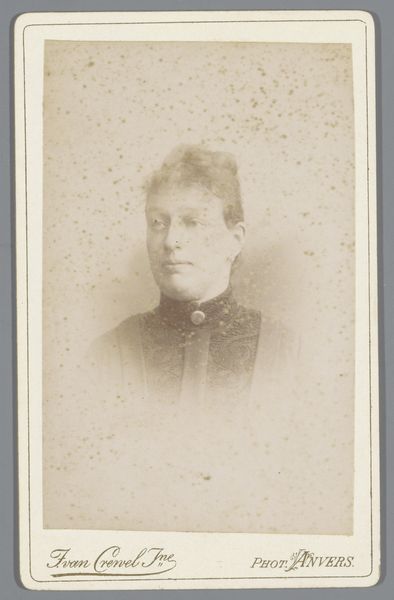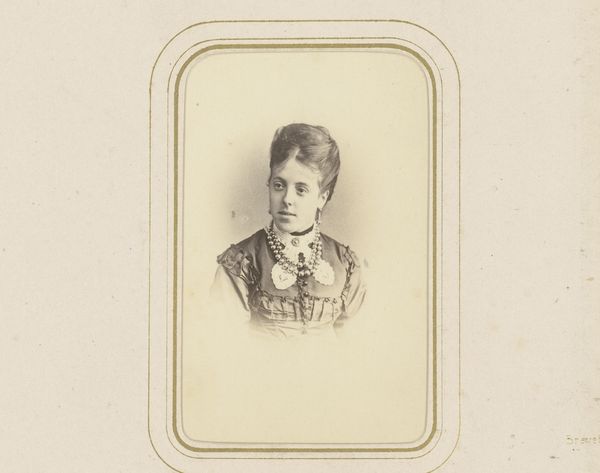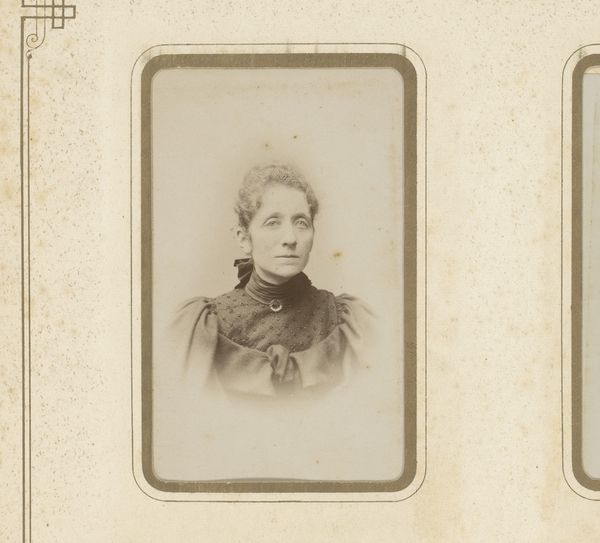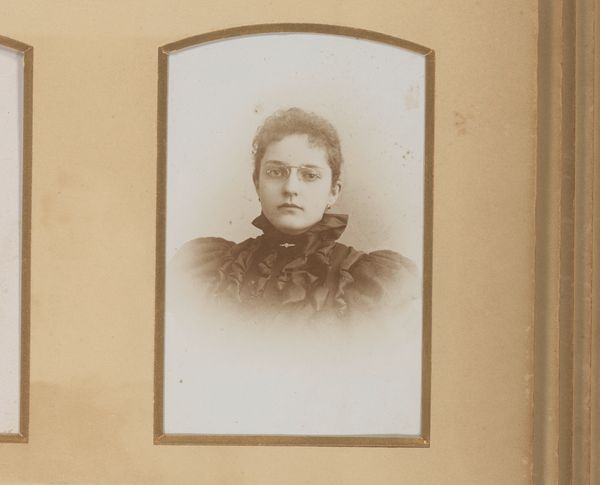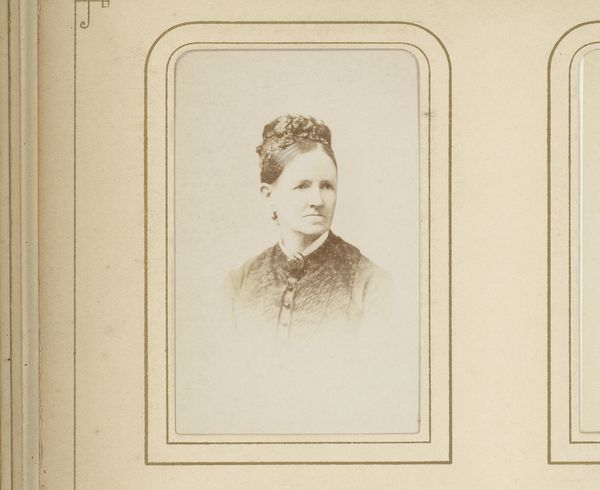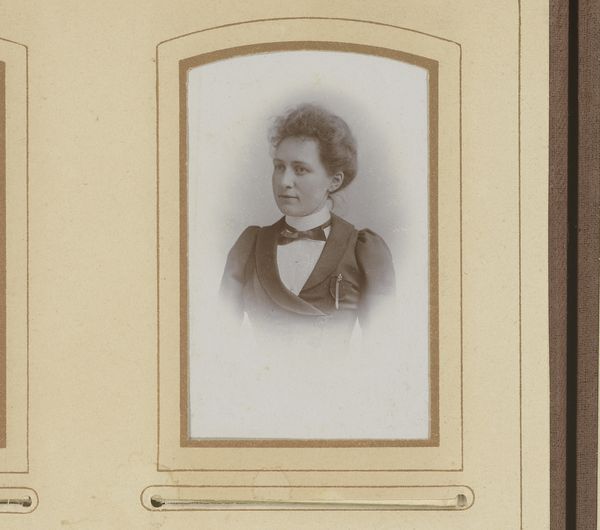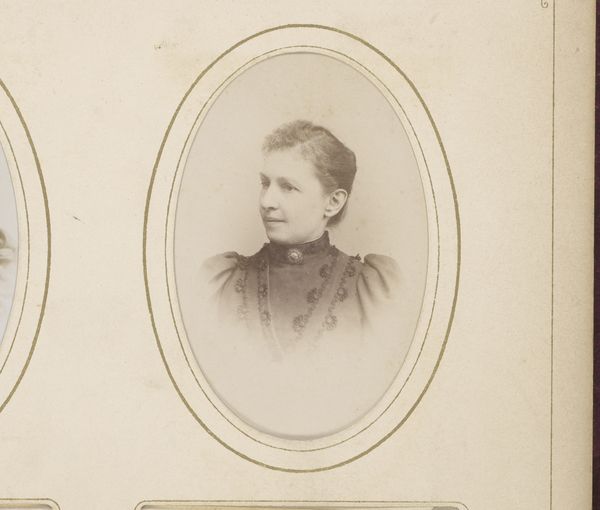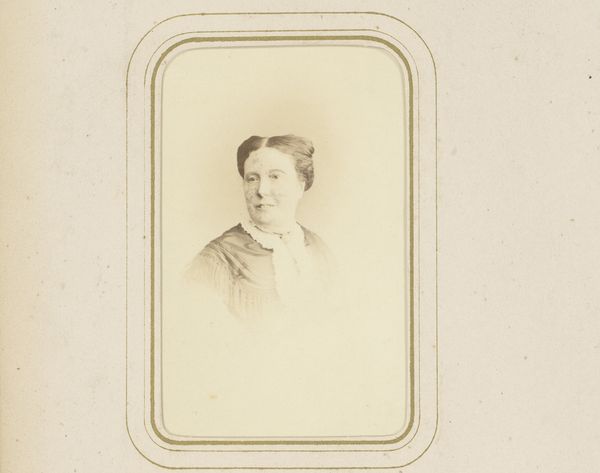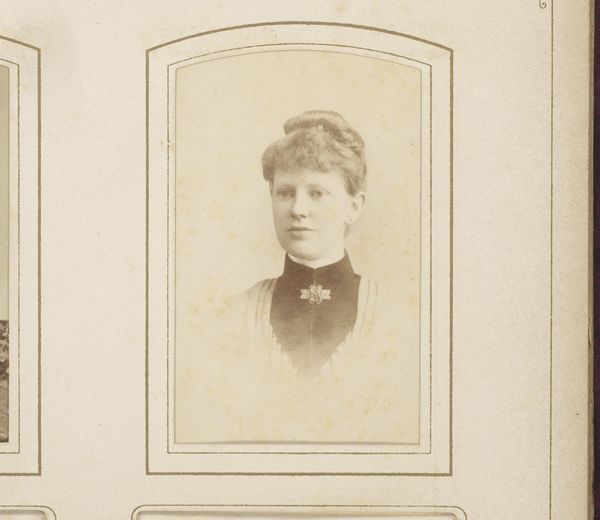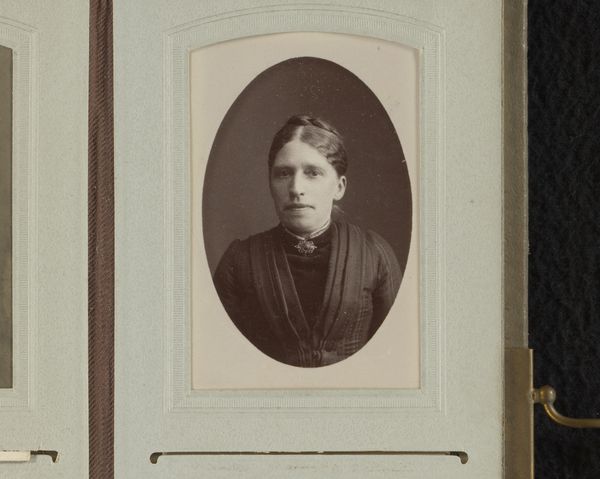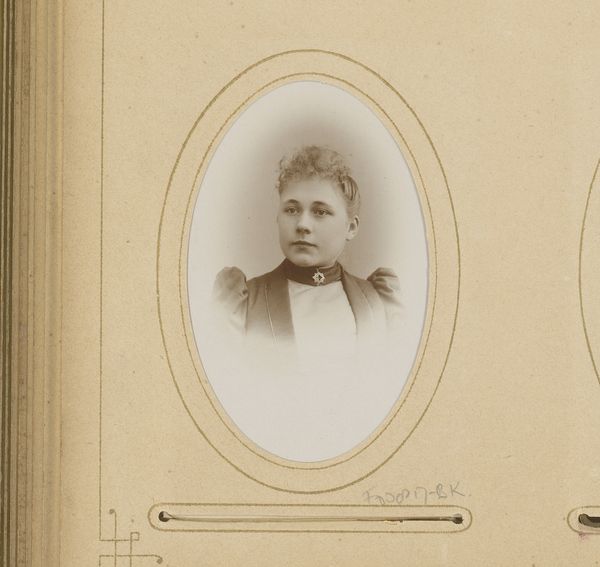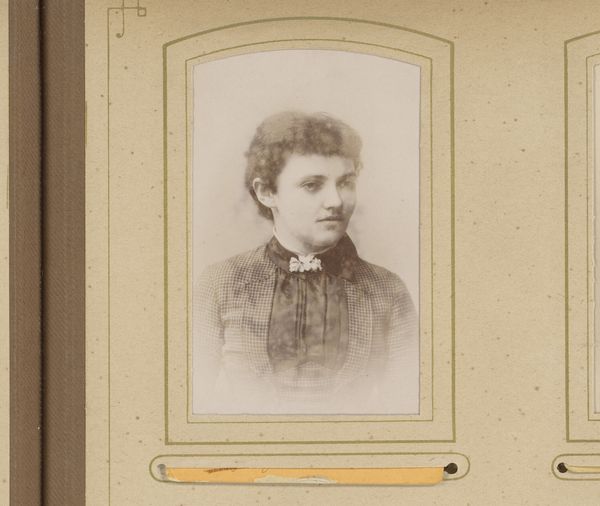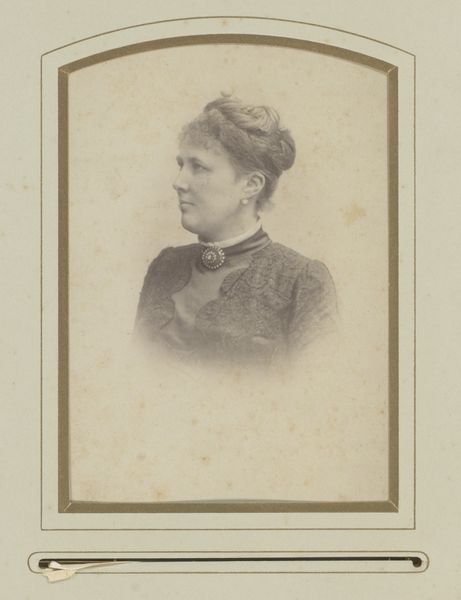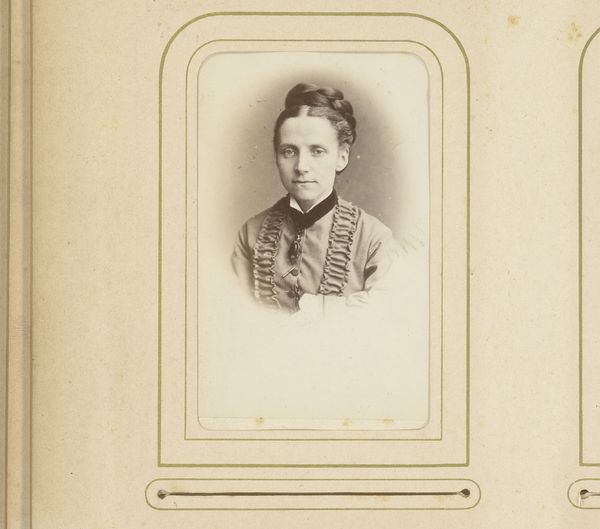
photography
portrait
photography
portrait reference
Dimensions: height 84 mm, width 50 mm
Copyright: Rijks Museum: Open Domain
Curator: Looking at "Portret van Jeanne Ernie-Guétin," a photographic work created sometime between 1880 and 1920 by L. Larger, I am struck by the stark, almost melancholic, aesthetic despite it being a classic portrait. What's your initial take? Editor: Well, my initial impression is its slightly faded tone, which evokes a quiet sense of the past. The rigid formality and subtle coloring really underscore its cultural position. Curator: Precisely! I think that sepia tone speaks volumes. But let’s look closer at the composition. The artist frames her almost squarely. She becomes this compact figure of geometric arrangements— the way her collar fans out like an inverse pyramid and the subtle rounding of the photographic inset... Editor: The subject's dress code would be key here, suggesting upper-middle-class status and strict Victorian decorum. Curator: Indeed! The attention to the textural details—the tiny dots on her dress, the lace at her neck, even the slight frizz of her hair—are fascinating in their rendering of the subject’s persona. How does the photograph present the subject? Is it a statement or just documentation? Editor: Both, perhaps. The portrait presents an individual, while it documents the values and aesthetic conventions of an era when the emerging middle classes seized on such technologies to record their existence. Curator: So true. Consider how the photographic format reinforces a certain democratization of art. Portraits, previously accessible only to the elite through painting, became accessible to a wider audience, though not the underclasses. The act of commissioning a portrait reflects a profound shift in cultural identity. Editor: Exactly! And the pose, so common in portraits of the era, it reflects social conventions regarding propriety. And look closely at that faint trace of the artist signature near the corner; it adds a vital human touch, subtly connecting us back to the circumstances surrounding this particular depiction of the sitter. Curator: Ultimately, through formal arrangements, photographic technology, and the subject's accoutrements, it's much more than capturing an image. "Portret van Jeanne Ernie-Guétin" offers us a glimpse into not only its subject, but also the historical dynamics of the Belle Epoque and its emphasis on class and modernity. Editor: Indeed, and what appeared rigid to me at first is also deeply sensitive, like the photographer was really considering his sitter and her status.
Comments
No comments
Be the first to comment and join the conversation on the ultimate creative platform.
